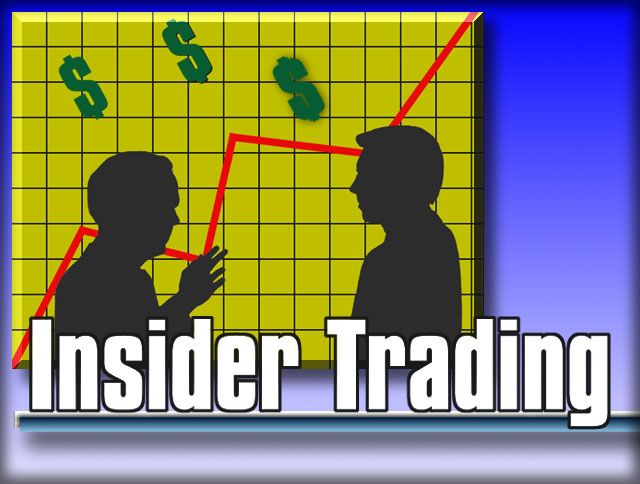The insider trading anomaly was first formally identified by James Lorie and Victor Niederhoffer in a 1968 article Predictive and Statistical Properties of Insider Trading. Much has changed in the investment markets over the ensuing years. But the predictive properties of insider trading remain as relevant today as they were a half century ago.
James Lorie was a stock market researcher at the University of Chicago. Victor Niederhoffer was a professor and trader who would work with George Soros and gain fame as a speculator. At the time, expert opinion was polarized as to the usefulness of insider trading data. On the one hand, academic studies had found there was “virtually no evidence of profitable exploitation by insiders of their special knowledge and no value to outsiders in data on trading by insiders.” But many market watchers believed that “insiders often make extraordinary profits and that knowledge of their trading is valuable.”
Back in the day, insider trading reporting was slow and imprecise.
In 1968, as now, corporate insiders were defined as any officer, director or 10% holder of the shares of a publicly traded company. However, studying historical insider trading was challenging, as the data was often imprecise. The SEC published in print a monthly summary of trades compiled from month-end reports by insiders. A trading insider had to file with an exchange within ten days of the end of the month. (In 2003, the SEC began requiring online submission of Form 4s within 2 business days of an insider trade.)
The often incomplete data made interpretation of insider trading data difficult. For instance during 1951-1962, the SEC’s summary only gave the month rather than the actual date of individual transactions. The summary for the 1930’s came in three sections and was over 70 pages long. Many transactions were reported two or more years after the actual transaction. Previous researchers were forced to limit the size and scope of studies because of these difficulties.
Lorie and Niederhoffer discovered that previous researchers had seriously understated the profits of insiders from their trades.
Lorie and Niederhoffer carefully analyzed data on insider trades from 1950 to 1960 of a random sample of 105 New York Stock Exchange companies. They concluded that “proper and prompt analysis of data on insider trading can be profitable, although almost all earlier academic work has reached the contrary conclusion.”
Among the discoveries of the researchers:
One insider buy or sale suggests others are likely to follow.
One insider purchase or sale tends to predict that others are forthcoming. The authors noted the “striking property of continuity in insider trading.” Long runs of consecutive insider purchases or sales in a company are a frequent occurrence. The odds in favor of a purchase followed by a purchase were three times as great as a purchase followed by a sale. Furthermore, the odds in favor of a sale after a sale were twice as great as after a purchase.
Changes in the direction of insider activity is important.
They noted that “a change in direction from selling to buying tells us the new fact that future purchases are to be expected. The change in direction of activity probably is of importance in deducing insiders’ expectations concerning their stocks.”
Insider trades tend to forecast large price changes.
Lorie and Neiderhoffer found that insiders are “superior forecasters of large changes.” They found that “the odds in favor of a large price increase were 2.5/1 after purchases and 1.1/1 after a sale. Difference between ratios at least as great as observed would occur in a sample substantially less than 1 in 10,000 occasions if the universe from which it was selected had ratios of equal magnitude.”
Intensive trading is predictive of subsequent unusual price movement
The researches tested the relationship between intensive insider trading and subsequent price movements in the stocks. Intensive insider trading is when 2 or more insiders buy or sell in a given month. They used a sample of stocks for a period in which the exact dates of purchase and sales were available. For each trade, the price on the date of the transactions and the price six trading days into the next month were determined.
“Data based on this procedure indicate a strong relationship between insider trading and price movements. Furthermore there appears to be an opportunity for investors to profit from knowledge of trading by insiders. Thus, when the number of buyers exceeded the number of sellers by at least two, the probability was about 0.60 that the stock would outperform the Dow Jones Industrials during the six months after the sixth trading day following the end of of the month in which the trading took place.”
Lorie and Niederhoffer concluded that:
“This study indicates that proper and prompt analysis of data on insider trading can be profitable, although almost all previously published studies have reached the contrary conclusion.”
The insider trading anomaly persists.
A long list of academic researchers have studied the Insider Trading Anomaly in the years since Lorie and Niedehoffer’s study. They have generally reached the same conclusion. When corporate insiders trade in their own stock, unusual price changes are more likely going forward.
In 2003, Jeng, Zeckhauser and Metrick calculated insiders’ actual returns for their purchases and sales. They found that the abnormal returns for insider purchases held six months are between 6.24% and 8.16% annually. The first five days after a purchase yield approximately one-quarter of the abnormal return. About one-half comes within the first month. They found that insider sales are not profitable but insider purchases are.
CFOs are particularly skilled at timing their purchases, according to this study.
Insiders may attempt to disguise the content of their trades by filing after market hours.
In 2015, these researchers analyzed Insider Trading Patterns and found that
…corporate insiders trade over longer periods of time when they may have a longer lived informational advantage…we find that isolated stock sales and purchases, and extended sale and purchase sequences (those spread over multiple consecutive months), predict sizable abnormal returns on average…
The researchers also discovered that:
…insiders attempt to preserve their informational advantage to maximize trading profits by disclosing their trades after the market has closed. When insiders report their trades after business hours they are more likely to engage in sequences rather than isolated trades, they trade more shares over more days, and the abnormal returns are larger on average.
With so much data available to investors, one might think that stock markets are more efficient than ever. Yet the insider trading anomaly endures 50 years after it was first identified by Lorie and Neiderhoffer.
You can follow the latest insider trades and develop strategies to profit from insider activity at WhaleWisdom.com.
Disclaimer:
Do not construe anything written in this post or this blog in its entirety as a recommendation, research, or an offer to buy or sell any securities. Everything in this blog is meant for educational and informational purposes only. Do your own research before investing and don’t risk more than you can afford to lose. This article expresses my own opinions, and I am not receiving compensation for it (other than from WhaleWisdom). If you buy a book after clicking on one of the above links, I may received an affiliate fee. I do not have a business relationship with any company whose stock is mentioned in this article. I or my associates may hold positions in the stocks discussed.




